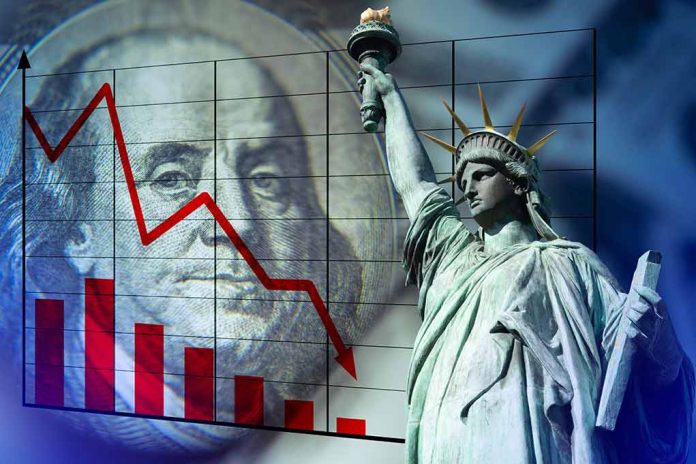
U.S. economy expands at 2.3% in Q4, falling short of expectations amid persistent challenges.
Key Takeaways
- The U.S. economy grew at an annualized pace of 2.3% in Q4 2024, below the expected 2.6% and down from 3.1% in Q3.
- Consumer spending increased by 4.2% annually, driving economic activity despite inflation pressures.
- Business investment fell by 2.2% due to tariff uncertainty and labor supply constraints.
- The Federal Reserve paused interest rate cuts, awaiting clarity on economic policies.
- Economists project 2.2% growth for the U.S. economy in 2025.
Economic Growth Slows in Q4
The U.S. economy expanded at a slower pace than anticipated in the fourth quarter of 2024, growing at an annualized rate of 2.3%. This figure fell short of the expected 2.6% and marked a decline from the 3.1% growth seen in the third quarter. The slowdown reflects ongoing challenges faced by the economy, including persistent supply chain bottlenecks and inflationary pressures.
Despite the tempered growth, consumer spending remained a bright spot, increasing by 4.2% annually and constituting about 70% of economic activity. This resilience in consumer behavior has been a crucial factor in sustaining economic momentum, even as other sectors faced headwinds.
Challenges in Business Investment and Government Spending
Business investment experienced a notable decline of 2.2% in the fourth quarter. This downturn was attributed to uncertainties surrounding tariffs and constraints in the labor supply. Significant decreases were observed in equipment and structures investments, highlighting the cautious approach taken by businesses in the face of economic uncertainties.
“This was a decent fourth quarter GDP print that highlighted rock-solid consumer spending and a sustainable economic expansion that should carry on into the first half of this year,” said economist Scott Anderson of BMO Capital Markets. “But with GDP growth year-on-year still running a little hot, the Fed will need to continue to patiently await more clarity on tariffs and the inflation trajectory, before resuming rate cuts.”
Government spending also showed signs of moderation, rising by 2.5% in the fourth quarter, a slower pace compared to the 5.1% increase observed in the third quarter. This deceleration in government expenditure further contributed to the overall slowdown in economic growth.
Consumer Resilience and Housing Market Strength
Despite economic challenges, consumer resilience remained a key driver of growth. Average income gains have outpaced inflation since May 2023, enhancing consumer buying power. Higher-income households, in particular, increased spending due to stock market gains and rising home values. However, lower-income consumers faced financial strains from high inflation and interest rates, leading to record-high credit card debt and elevated delinquencies.
“The U.S. consumer has been unstoppable, supported by wealth creation, a strong labor market, and lending. Still, inflation is a bit too high for the Fed’s liking and the bar to a March rate cut is rising.” stated Ellen Zentner, Chief Economic Strategist at Morgan Stanley.
The housing market showed surprising strength, with residential investment rising by 5.3%. This increase was driven by a persistent housing shortage, even in the face of high mortgage rates. The resilience in this sector underscores the ongoing demand for housing despite challenging economic conditions.
Federal Reserve’s Stance and Future Outlook
In response to the economic landscape, the Federal Reserve has maintained a cautious approach. The central bank paused interest rate cuts, awaiting greater clarity on economic policies, particularly regarding tariffs and immigration. This pause reflects the Fed’s careful balancing act between supporting economic growth and managing inflationary pressures.
“We don’t need to be in a hurry to adjust our policy stance,” Fed Chair Powell emphasized.
Looking ahead, economists project the U.S. economy to grow by 2.2% in 2025. While this forecast suggests continued expansion, it also indicates a moderation in growth compared to previous years. The economic outlook remains subject to various factors, including global economic conditions, policy decisions, and the resolution of ongoing supply chain issues.
As the U.S. economy navigates these complex dynamics, policymakers, businesses, and consumers alike will need to remain vigilant and adaptive to ensure sustained economic health and stability in the face of persistent challenges.









